Episode 9
Representation In The Classroom
S02 - Episode 9
December 28, 2024
49 mins & 53 secs
Speakers
Chris McLaughlin
Soren Peterson
Kelsey Sturinova
Emily Frogmoren
About
In today’s special episode, two educators discuss the critical role of schools in creating safe and inclusive environments for LGBTQ+ students. This episode covers strategies for fostering respect and understanding within educational settings, alongside personal stories from the front lines of teaching.
https://www.youtube.com/@InspiredInsightsPodcast
inspiredinsights@inspiredcg.com
*Please note that this episode contains sensitive behavioral health topics such as suicide and substance use. If you are experiencing a behavioral health crisis, please contact the 988 Suicide & Crisis Lifeline by calling 988 or visiting www.988lifeline.org.
**This podcast is for information and entertainment purposes only and should not be considered health advice. This podcast is not intended to replace professional medical advice.
Transcript
The Inspired Insights podcast is for informational and entertainment purposes only and should not be considered health advice. This podcast is not intended to replace professional medical advice. Please note that this podcast may contain discussions on sensitive topics such as mental illness, suicide, and substance use.
If you are experiencing a behavior health crisis or need support, please contact the 988 Suicide and Crisis Lifeline by calling 988 or visiting www.988lifeline.org.
Soren:
Welcome, welcome, welcome to the Inspired Insights podcast. We have two lovely guests.
I am your host, Soren Peterson.
Chris:
Chris McLaughlin, welcome. Wonderful to see you two around the fire pit side chat.
I think that’s what we’ve been calling these.
Soren:
Fire side chat, FDR. And these two lovely ladies are?
Kelsey:
I’ll start. I am Kelsey Stoyanova, and I teach English. And I am also a local Maine born and bred and the 2022 Maine Teacher of the Year.
Emily:
And I am Emily Brockmorton, also an English teacher in the state of Maine and have been in Maine for 25 years now, even though I’m not from Maine. And I am the 2024 Penobscot County Teacher of the Year.
Chris:
Yes, we are sitting with royalty. It’s so nice to have you for our listeners in the spirit of transparency. I have known both of you for years, have traveled and vacationed with your parents and have been connected with you and your family also for years.
And so we have talked about this particular episode for a while now, and I’m just so excited for you all. And our listeners know that Sorn and I have chatted about issues of education as far back as really our introductory episode is as education, having two being raised by parents of educators. This is a topic that’s so important to me as well.
So I’m glad and so thankful that both of you could join us.
Soren:
Yes, I know. Well, let’s start it off with our inspired insights.
All right, Sorn, lead us. I’m going to go first. Earlier today, I was reading a bit of Albert Camus, a famous French philosopher, and I read a quote that really struck me.
We must imagine Sisyphus happy. And this is regarding how the fight against our seemingly unending issues and the turmoil of life is what we should derive our happiness from, not our end state. And that’s something that drives me a lot.
And I find very powerful.
Chris:
I actually followed that this time. Yeah.
Yeah. That’s a good one. Embrace the absurdity of life.
I love it. I love it. My inspired insight of the week.
So we’ve been talking about this for a while. My 50th birthday has now finally come and gone. We’ve been leading up to it for a while.
And part of the birthday celebration was a new tattoo. And we’ve talked about this idea of the let them philosophy for a while. And I think there’s something about turning 50 that makes that click on a little even bit more, more prominently.
And so as we approach what I anticipate to be a contentious election season, I think let them is probably where I’m camping out in my inspired insight of the week. Just the importance of that being a thing
Soren:
with the election already having happened.
Chris:
Already have happened, which is wild to even think about.
Emily:
Yes. What does the future hold? Well, mine piggybacks very nicely off of Chris.
This is Emily. I also turned 50 this year. And this quote actually dovetails nicely with yours.
So this is a Roosevelt quote, but it comes to the forefront of my mind this week because I heard it again in a Brene Brown podcast. And it is the man in the arena. So we can we can.
Well, let’s all read it as it’s written, which is with man. But we can remember this applies to all humans. It is not the critic who counts, not the man who points out how the strong man stumbles or where the doer of deeds could have done them better.
The credit belongs to the man who is actually in the arena, whose face is marred by dust and sweat and blood, who strives valiantly, who airs, who comes short again and again. And if he fails, at least fails while daring greatly. And that quote is a huge inspiration to Brene because she actually named a book after the daring greatly quote.
Just as somebody who struggles with anxiety, I really have to remind myself constantly to not worry about the critics, especially the critics that are criticizing from a place of not putting themselves out there. And so in teaching, it’s something I really strive to talk about with my students. But also in my life, I have to remind myself that no matter how it goes, it’s always better to put yourself out there and try and that you’re always stronger for the trying.
And to sort of quiet those critics that are always around, because maybe they’re not trying it themselves, but you’re the one out there.
Chris:
The magic of turning 50. Curtin’s part. Kelsey.
Kelsey:
I’m going to take my inspiration from a student today. Actually, I was thinking it connects really well, actually, to this idea of let them. But also this idea of pushing through moments of difficulty or moments that you feel like you can’t you can’t accomplish because it’s something you’ve never done before.
So end of the quarter, when this was filmed, students are doing book talks right now. And I had a student who was getting close to the end of quarter, hadn’t read a second book. And I offered him a book called Orbiting Jupiter by Gary Schmidt.
It takes place in Maine. And I said, you know, this is a book that I give to students. And it’s one that I think every kid should read before they graduate high school.
It’s not a hard read, but it’s a really meaningful read. I call it small, but mighty. I love a good small, but mighty book.
And so today he presented his book talk and he had multiple books to choose from, but he chose that book. And so he gets up and he shares this book and he’s getting increasingly passionate as he’s talking. And I’m looking at and he was the last one to go, by the way, which was also making me anxious.
But he gets up there. He talks about this book. And immediately after two kids came up and said, well, I need to read that book.
I need to read that book because I was in foster care when I was younger. And I think I really I know how it is. And another kid said, well, I need to read that book because my life wasn’t always easy.
And I want to see how this kid’s story was. And this was all happening real time. And I’m like, what?
Like, you know, these are like unintended successes of pushing kids to share and letting them read. And I hope we’ll talk more about that as time goes on. But this idea of let them and let them read and let them let them be out there and share themselves in all of their in all of their humanness.
And so that was my inspired moment that I didn’t even expect to have today.
Chris:
Oh, that’s so beautiful. And you know what? It also makes me think about Soren and I in our first premiere episode of this season.
Our topic was around collecting joy and the importance of intentionally finding those moments of joy and then packing them away and hanging on to them. And I imagine, well, for for educators similar to social work, you have to be really on your game to grab on to those moments because they don’t sometimes come as often as we would like them to be. And so when you see them get really intentional about packing it away so you can come back to it.
What a great success. Yeah. Thank you all for that.
Soren, when we were prepping for this conversation, you had a topic that I thought would be awesome to kick us off. And I think it’s a bit of a retrospective and forward look of teaching. Yeah.
Soren:
So I think today we’ve addressed the topics of trials and change. And right in that wheelhouse, I’d like to start the conversation off by asking how you’ve noticed the teaching space change both during and after the COVID-19 pandemic and what that’s looked like for your students, for your teaching style and for your interactions with the public and the like.
Emily:
You want me to start? Sure. Okay.
Oh, my goodness. This is a big topic. So March 2020, you know, sent us all home and we would have had no way to know that we were not only not going back that year, but that the following teaching year would be different.
And really just things would be different from then on. I would say, and Kelsey, you can jump in any time, but that there are some things that are better and some things that are harder. Some of the things that are harder is that the relationship with school changed because kids were home for over a year.
And therefore, we are now struggling with attendance in a way because of that relationship. Some students feel that they can access education from home because so much of what we do is also offered online in Google Classroom and classroom websites. So there’s sort of a mentality shift that’s not always positive, which is that kids don’t feel that they need to be in the building and they’re missing out on a lot and we’re missing on having them.
So that’s one of the negatives. One of the positives is that it forced us to really be creative and think outside the box and to do things that we before would have said, well, you can’t do that. So we have been more creative in the way that we present material, the way that we reach kids that are at home.
We have more options for kids because we were forced to create them. So maybe a hybrid situation for a kid that’s struggling with mental health, we may be able to offer an online class here or there, whereas before that wasn’t available. And so in some ways it brought out the best in us as educators because we survived that.
And that was crazy that our kids were just at home and we weren’t with them anymore. And then we figured out a way to make it work. So I think it allowed us to think, OK, well, if we can do that, then we can do this and this and this.
Kelsey:
I think it also, speaking to that, it also really solidified for everyone outside of the school realm just how important relationships between students and teachers really work. I think you always ask kids from the youngest age, who’s your favorite teacher? What do you love about school?
Those types of things. And then COVID came and the ways in which we had to engage students, it was really, really different. And a lot of us were doing some of those things before, but it became clear that that was the way forward.
And so I would say, too, like I look at every assignment now and I look at every kid and I’m like, OK, how is this going to be successful for them? How am I engaging them to be their best selves? And the options that we offer kids now are so varied, whereas I think it was a lot more rigid before.
And that was a lot of that was due to policy. And I think that’s an important piece, too. I think by allowing the outside world to come into our virtual classrooms, they saw our creativity and were able to be like, hey, that’s really working.
Thanks for what you’re doing. And then we got to keep doing that, whereas before it was like you have to do this, this and this, because this is what’s expected of you. The hardship around attendance, I think, is something that’s very real.
And I think it alleviates this or not alleviates. That’s the wrong word. Let’s cut that.
English teacher saying wrong. It’s it really shines a light in a not so great way on the lack of structures that are in place for kids that need support beyond the walls of a school. I have been a part of many conversations around what systems do we have to make sure kids can access school in a way that suits them best.
But there is no policy that exists around attendance and what that looks like for each individual kid. And I think that’s what we’re really going to come up against, because no matter what, I think the school just threw a. Yeah, I mean, that was fantastic.
No matter what’s going forward, we need to look at how school functions. And at the end of the day, even though we have changed as educators, the time structure of school has not changed. And I think that’s something that needs to be talked about at a higher level than just an individual school, an individual department, an individual state, because this is something.
Chris:
Yeah, matching the the school environment to the developmental levels and needs of kids that you both are talking about, like innovation and creativity. And still bumping up against some of the rigid structures that exist of business as usual. And I I hear that as a social worker all the time that, OK, it’s done back to normal, back to usual, back to.
Emily:
We hear it all the time. Let’s get back to normal. And that’s my.
Kelsey:
And so my big question is, why? Why go back? Like, why is it always let’s go back to something?
Why are we not saying let’s look forward? Let’s let’s evolve. Let’s see what’s working.
And let’s have conversations around the fire pit.
Emily:
Yeah, I agree. And can I jump in? All right.
I also think that it’s not. I hear this comparison all the time of pre-COVID post-COVID teaching. I can’t think of and if you can then throw it out there.
I can’t think of a way that that benefits our students, our students now to compare to compare them to what it was like four years ago or two years ago. I just don’t know. You know, their reality is their reality.
Nobody asked for COVID. The struggles that kids have today are definitely impacted by the year and a half that they missed from COVID. But they’re also impacted by technology and their cell phones that were literally created to cause them to become addicted.
Chris:
The same pressures that existed prior to March of 2020.
Emily:
Yes. And and and the mental health issues, which are so much worse now. So these students that we have now didn’t ask for any of this.
They’re they’re just products of their time. And it doesn’t I just can’t figure out why it is beneficial to keep going back to how we used to do things when that’s just not the world we live in anymore. And those kids these kids have different needs.
And, you know, one thing that I do differently now is I teach a little bit slower. I don’t cover as much material as I used to. But that is also not a negative.
I think diving in really deeply and spending more time on a text is is not a negative. But it is constantly compared to the pace at which we were going before COVID. Yeah.
Chris:
Right. Yeah. I could not agree more.
And I’m somebody that often talks with different industries that COVID has perhaps forever changed the way we do the things we do, whether it’s teaching, whether it’s hybrid or remote work settings. Whether it’s how we grocery shop or how we collect our paper supplies and always thinking about having more or extra. Yeah.
Soren, as a student during that time, when you hear Emily and Kelsey talk about, like, innovation, creativity as an end user, did you feel I’m curious, did you feel that shift in doing things more uniquely?
Soren:
I think that things have certainly transitioned online more. I don’t very much remember my education pre-COVID.
And during COVID, I’m going to be honest, I failed every class. Yeah, I failed the last half of seventh grade and then I failed all of eighth grade. I think your class included.
Yeah, I think that the most pronounced impact that I’ve seen is like precipitous psychological shift in the students that I am interacting with and that are in my classes. I think that online has or the Internet rather, has allowed students to diverge in interests and personalities and psychological conditions a lot more than they previously were. And I think that that is a net neutral shift.
I think it’s good in that it’s allowed students to express themselves more fully, develop more unique and individualized personalities. But I think it has hurt a lot of students in that the education system in the U.S. right now is still designed for homogeneity. And a very heterogeneous group being put into a homogeneous school system is creating a lot of conflict and causing attendance issues like you guys were mentioning.
I don’t have the opportunity to interact with a large portion of the student body because of the classes that I’m taking for the most part. It’s the same group of like 40 kids that I’ve been taking classes with my entire career at school. But I’d be interested to hear what you guys’ perspective on how education is going to shift to meet the needs of students.
But I don’t see a future in which the same homogeneous treatment of students will continue being successful in the future. I think we’re going to need to hyper-specialize education in order to produce a diverse body of laborers. Because ultimately, in my eyes, from the utilitarian perspective, school is primarily to produce an economically productive population.
You guys might have a different perspective on that.
Emily:
Well, that is true. But I think there’s happy and healthy people.
Chris:
Prepared for adulthood.
Emily:
Responsible, productive, engaged in the world, curious.
Chris:
Regardless of post-secondary education or vocational training or hanging out. You know, I think for me, a theme that the three of you are talking about is this idea that maybe through COVID, the attention shifted to get really much more student-focused. Like, what does this student need?
And Emily, you’re talking about how you’re even seeing that now of being able to adjust and bend and flex. So maybe half-day attendance, maybe some remote, some in-person, maybe only this day or this day, maybe coming on site for these classes. I’m going to let that burn.
So you let them. But I think that the ability to, instead of the collective student body, here’s what is good for all kids. Honing that in, what does Chris need?
What does Sorin need? And how do we flex the system to support the kids?
Emily:
Which is really difficult in big schools, especially. But I feel like the spirit is moving more in that direction. And there’s a lot more conversation about creating options to tap into every individual kid’s needs.
Kelsey:
One of the things, I mean, I start every year, and I’ve done this for many, many years now, with just saying to students, one of the things we’re going to think about and talk about all year is how does what we read as English, in an English class, how does what we read connect to ourselves and the world around us? And the idea of that being that one of my primary roles is to help you engage in this safe space with ideas and themes and topics in a way that you feel comfortable being a productive reader, writer, thinker, speaker. And if I can help each individual kid feel confident in those aspects before they leave my classroom, then I’m going to call it a success.
And for some kids that might be, I want to focus in on being a better speaker and what that looks like. And maybe that’s just being able to have a conversation with three people about something that I’m passionate about. Or maybe it’s, I want to be a better writer.
And then they produce something that they feel is so profound that they bring it home and share it with their family where they might not have before. And so I think a big part of this push forward in education is ultimately we are trying to help children grow into adults that feel like they can be productive in a way that they have success and they leave their mark. And that will look different for every kid.
And so I think at the individual classroom level, we are working our butts off to make it a more heterogeneous experience, even if the structure itself doesn’t necessarily say that we can, so to speak.
Chris:
And at the end of the day, you only have the tools that you have. And so whether you’re a giant 1,000 plus school district or a K-4 school with 60 kids in it, you only have the tools you have.
Emily:
And we have our, I don’t know how many students you have this year, Kelsey, but I have about 85 or 90. And that’s my focus. I can’t do it all.
I can’t change the entire system. But I can work with every kid that I have. And that totally links to safe spaces because that’s our goal is to have every kid feel like we see them.
We see how they learn a little differently than the people sitting right next to them. We may offer them an opportunity to show us what they know in a slightly different way. And we can really empower each individual kid.
So it’s frustrating when we feel like we have great ideas that, you know, the system’s just too big to fix it all. But we can offer our own insight and we can also just be in our classrooms with our awesome kids and one kid at a time.
Chris:
One kid at a time. Yeah, Sorin and I talk about allyship all the time as well and the importance of representation and inclusion and safety in all spaces and I Know that’s a big mantra of mine and the work that I do especially with with queer youth But but kids of all measures of diversity from the left-handed kids to the neurodiverse kids to the differently abled kids to The BIPOC kids to yes the the queer kids and so I’m curious what are some of the things you both do intentionally to create that environment Recognizing Emily to your point like my scope of influence is my classroom and every kid that enters this room
Emily:
So and we do a lot of talking to other teachers and we work with pre-service teachers in some capacity So we do try to spread our our web a little wider I Know I can speak for both of us when free choice reading and putting books in kids hands is super important But Kelsey’s really the pro on that so I’ll let her talk about that one and both of us have really amazing classrooms that are super cozy and safe and Everything I mean from tables instead of rows of desks I mean turning off the fluorescent lights and having actual lamps in there Having everything from having blankets available for kids that are cold a snack drawer You know just then books of bins of bins of books that they have chosen for themselves A teacher that says hello and talks to every kid tries to talk to every kid every day. Yeah, all of that is Might sound generic, but it’s so key to Offering a kid a space in the building where they feel that they can breathe and relax their guard down and Obviously, they’re gonna learn the academics so much easier and more in-depth if they feel that way But just on a human level.
I like being a place where kids are Relieved to walk into that space. Yeah, it’s super important.
Soren:
I can attest to the value of a more like casual learning environment Because I like to talk a lot in class And when a teacher makes me feel comfortable to do so and when the setting is more familiar and casual less like authoritarian I am so much more driven to become interested in what we’re discussing And engage with it on a deeper level. Yeah, and I I think teachers who have done that have really Brought me from a place where I hated the education system and had a loathing for material that I was being taught Into a place where now all I want to do is pursue the things that I’m learning outside of class
Chris:
and do more of it Yeah. Yeah, Kelsey.
I know watching your 2022 journey as the main teacher of the year The one of your platforms was really what Emily referenced around Representation and reading. Do you want to speak a little bit about the power?
Kelsey:
You know, I think Well, first of all, I will say I was really fortunate to have earned a book love foundation grant back in 2020 2021 like it is in the process there and Even before that obviously the power of reading and the power of students selecting what they read I saw how that was the foundation of my classroom But I also want to put out there that it is not always possible for teachers to be able to facilitate the the ability to help kids choose books the way that I have been able to because I’ve been able to I’m fortunate enough to have been able to build up a classroom library like I have because of the grant And other resources including the support of people when I was named teacher of the year. And so I’m really thankful for that I think that a lot of kids Do a lot of reading when they’re young if they are fortunate to have supportive systems that allow them to do that and then oftentimes when they get to middle school, there’s this drop-off and That’s when you start hearing. I hate reading I hate to read and I always came back and said I don’t think you hate to read I think you haven’t found the right book yet.
And and I think once I started Processing with students like let’s just pass some books around Let’s decorate our walls in our classroom with the books that you loved One of my favorite things that I do every year is I have our shared shelf and I have students decorate book spines of their Most right from the start their most impactful book from the last two years. It could be favorite or most impactful sometimes those are the same book and When they come in after doing those book spines and they see their their shelf all in place They go over and they’re like, oh that I’ve read that book before that’s such a good book Oh, you know, that looks really cool. I had a student coming.
He’s like, oh, I’ve never seen something like this before This is actually way cooler than I thought it was going to be when you told me I had to color this rectangular, you know paper and so a lot of the book pairing that I do comes from getting to know students and knowing what they care about and you know who they want to be and what they are right now But the students themselves do a lot of the work yeah, the matchmaking the matchmaking and you know to Emily’s point with the classroom, I’m glad she brought that up because I Was without my own classroom for a year and one of the things that I missed the most was Putting things up on the wall for my students so that they could then interact with each other through the work that they did And that in itself I find creates a safe space because they are able to facilitate little independent Conversations where they learn so much about each other this year more than ever I’ve heard a lot of students after like congratulating their peers like if they’re presenting something or if they’re in discussion like that was a really good point you made like as This little aside like they think they’re not supposed to be talking, but I all of a sudden like I love that You just celebrated each other and I make a big deal out of it and they think that I’m so cringe
But it’s you know,
Emily:
I just well you could you’re creating a community they’re seeing their own work on the walls And they’re like, this is my space.
I belong here and that is so powerful for kids
Chris:
I’m curious and I know we have listeners thinking this right now and I hate to put you on the spot But what are some of the titles that come up? Year after year that you’ve been building this shelf
Kelsey:
Absolutely.
Um, so hey kiddo by Jared Kurzowska is a graphic novel that comes up every single year That is so I do this thing as an aside I have students when they finish a book put the book cover on a Google Doc I print out all of the book covers and I put them into a collage and so I can see Pattern well, they can see what each other is reading But I can see patterns of books that appear more than once and and so on and so forth So I’m pulling that from this right now. So hey kiddo Long way down by Jason Reynolds is another really big one whether it’s the book in verse version or the graphic novel version Those are definitely two that come up over and over and over again year after year probably since 2020 2020 2021 so they’ve kind of stood the test of time
Chris:
You think that’s kids like sharing with each other and kind of like passing the Favorite titles down class to class to class.
Kelsey:
Yes. I definitely think so. I I will say with the With the overpowering Tick-tock as it is.
There’s been a lot of a lot more tick-tock reads in the last couple years has kind of infiltrated the Typical common reads that I’ve seen and and I think that there’s some pros to that and some Maybe not but the pros are kids are talking about books more than I think they ever really have which I can appreciate so those two for sure and then I Would also say there’s some authors that kind of have stood the test of time people like Kwame Alexander and Nick Stone and Tiffany Jackson and Just to name a few and then The 1984 graphic novel has kind of come around recently So that one hit the graphic novel version came out I don’t know what year it came out, but that one has started to kind of take off a little bit
Soren:
What does that graphic novel look like because I saw it’s huge.
Kelsey:
It’s like yeah this big
Chris:
I’ve only ever read 1984 is like a book and the most Impactful part for me is just the multiple chapters where it’s like verbatim the book that Winston was reading to his girlfriend at the time
Kelsey:
So how do they they really kind of the the choice of color in it is very stark like it hits you like you’ve got The reds and the the neutrals, but it’s very it’s not full color.
It’s it’s very like in your face This is sameness and it’s you know entirety They separate it by chapter, but it’s not It’s not as clear-cut as the novel for sure but they do a really good job of Kind of making you feel a little scared. I guess it’s a nice way to put it. It’s got a like a mood It’s definitely got a mood.
Yeah, they’re color symbolism. Let’s pick it up.
Chris:
So, yeah, you know as you’re like graphic novels I heard you reference tick-tock. We talk about AI from time to time You know as the shifts in technology and pop culture advance I’m curious how you see that play out in your classrooms and I can tell by the look on your face It’s not always a great.
Emily:
It’s not always a great thing Some great things that we can talk about there are some great ways to use AI in the classroom Overall, though it is it can be very frustrating because and I don’t blame kids for being tempted by it It’s it’s very easy to you know, I just tried it today I I cut and paste my entire assignment that I had given into chat GPT to see what it would spit out and It confirmed what?
To produce yeah, so I had written this really We’re reading a book. That’s an adapted version of the Odyssey and I wanted them to create their own Story that could fit into the it’s called a missing chapter It’s just a creative writing idea where they try to mimic the style of the writing and they insert it in It could be inserted into the story So they it has to have all these qualities of the story that we’re reading so I wrote this great assignment and I think that I shot myself in the foot because If I had given it orally Then they wouldn’t have been able to replicate so I several kids used chat GPT and got caught because it’s very easy to tell when a ninth grader is using it and
Soren:
Large language models their specialty is Adapting other people’s work and especially like an assignment like that where they’re attempting to create something in a similar voice
Emily:
Very well, so, you know, these are kids that I know struggle with Grammar and punctuation and they’re writing these flawless long Complicated so it’s very and I tell I tell them at the beginning of the year.
I can smell it from a mile away So don’t try it, but they didn’t believe It was a good life lesson. I was you know, I don’t punish the first time I just say like look you cannot do this. It’s not your work.
You’re it’s cheating It’s plagiarism and and it’s not why we’re here. We’re not we’re not here to see what the computer can spit out I want to I want to see your thinking so even if it’s Poorly written. I’d rather see your writing.
So I give everybody, you know a first warning and hope they don’t do it again But I had the thought today like I wish this didn’t exist It is very frustrating That students think that this is a way To do an assignment and I know that you know It’s not this is not the certainly not the first time that we’ve dealt with possible plagiarism with students and they need to be educated about how it can be used because it can be used as if you somebody recently said think of it as As a peer or a colleague that’s going you can bounce ideas off of you can use it as a tool But you can’t let it do all the work for you and then turn it in so it is It’s too easy for kids. It’s it’s like it’s like this shortcut that they think is going to solve all their problems and So there are some really cool assignments that I’ve Heard of and done in class that use AI which I can talk about but do you want to talk first about how it’s frustrating?
Kelsey:
Yeah, no, I think I think you’ve kind of the last piece you said is the piece I want to expand upon this idea that like I Am trying now, especially I would say last year in this year to be more Transparent from the get-go about how I’ve used AI as a tool as a teacher how they can use it as a tool But at the end of the day, I want to see their thinking if I wanted if I wanted the computers thinking I wouldn’t even give them the assignment and I also have like Similarly to Emily if somebody does use it.
I have the conversation around trust and You know and respect for themselves and for like their own learning Yeah, and a lot of times I think it’s that learning moment that Allows them to almost appreciate what happens next even even more maybe And and I think when it comes down to it There are so many like I’ve seen I’ve gotten so many emails in my already full inbox about professional development around AI And what are we going to do? And what is it? What does this mean?
How can we you know accept essays anymore? Maybe we’ll have to stop doing essays all together like I all this stuff into my inbox and I’m like, okay Hold on There’s there’s got to be a way to approach this with a structure and system that works and I think that’s what we keep coming back to is this idea of Everything’s evolving. We have to evolve our structures that
Emily:
You know tongue-in-cheek I wish it would go away, but Mathematicians said that about the calculator to write just anything that is considered a shortcut and there are ways to work with it
Chris:
And so teaching students responsibility around this new powerful tool That we’re still figuring out
Emily:
Sorry
Soren:
Regarding that calculator example, so I’ve never used a AI for the synthesis or adaptations adaptation of ideas or the development of anything that I’ve submitted but I Am awful at spelling and I’m awful at punctuation and every single assignment.
I run it through chat GBT Do you think that it’s still valuable to teach kids? Grammar and stuff like I think an understanding of linguistics is really important and I really like that but like the rote memorization of spelling and stuff because your analogy with the calculator like Kids no longer know how to do a ton of brute multiplication and I’m an AP calc right now And I never do brute multiplication because I can just do it on my phone.
Emily:
Yeah Yes, I still think it’s important to teach grammar But I do also think that you know, I encourage them to use the tools that are on their laptops to here it is to proofread and I think they’re teaching grammar is not just spelling and where to put a period and when to use an apostrophe what your computer can help you with and by all means that Students should use all those tools. Yeah, but I think learning grammar can teach stylistically some interesting ways to put a sentence together
Soren:
Which is what I was addressing with an understanding of linguistics, right?
Like I think learning Latin has helped my English become far more interesting Developed and varied and I think that’s very important But I’m thinking more like punctuation. I never learned how to apply Punctuation and or I never never absorbed how to apply I mean
Emily:
it’s a great time to be a poor speller because the computer Everything pretty much that’s right
Kelsey:
Instantaneously This brings back again that overarching theme of like how do we teach young people how to use tools?
so that they can still Represent themselves the way that they want to express themselves the way they want to you know, I think You know I was teaching citations the other day and we ended up talking about how You can remove the period from a citation to put it at the very end But you shouldn’t remove a question mark in an exclamation point because that’s a part of expression, right? it means something and so there’s this idea of Showing the meaning beyond just the the skill itself. Like what is it?
What is it doing for you? How is it showing what it is? You want to say what it is?
You want to be heard as what it is? whether you’re talking grammar or any really anything and then the tools that we have absolutely use them and I think my my bigger hardship is When students have the tools I’ve taught them how to use them and then they still don’t get used and then I have to Okay, what is what next step do I have to take to make sure that everything kind of comes together, you know
Soren:
Yeah, so as we Start wrapping this discussion up. I wanted to kind of end on this Note of That teachers are human and you all are people with lives and interests and things and Just like all of us in every other profession a tough day can You know that tough commute that getting stuck in traffic the flat tire the slip on the ice Whatever that is.
It impacts our day and so To balance that I’m curious about What your most joyful Moments of teaching have been that remind you that this is why I do What I do when it comes back to maybe your how you started with that inspired insight but I’m just thinking about Giving you a chance to share a moment in time that kind of summarizes your why why I do what I do why I chose this and Keeps you motivated to that other Brene Brown quote about collecting joy and fueling Resilience. So a moment that reminds you that I’m an educator. I matter And this is why I do
Emily:
So I have a very specific answer to that question which is that about probably 12 years ago, I Said out loud to my class for the first time that I have anxiety and it was such a relief for me to say it and to own it and it actually made me feel better at the time because I One of my the ways that anxiety manifests itself for me is just sort of a performance anxiety And then here I am in front of kids all day and feeling like I have to constantly act like I have it all together And everything’s easy and I’m very capable and this is all no problem and I went through a stretch of my life where I was getting panicky in the middle of my teaching day and I finally just owned it and told my students that I was feeling that way and that it’s something that I have struggled with and It became completely my superpower as an educator because First of all, it made me feel better as I mentioned, but I had so many students Approach me that they couldn’t believe that I was anxious and that I was talking about it and that they and then they would share how they were anxious and So I guess just being human in front of my students and realizing that I really enjoy their company at the end of the day and that if they just see me as Somebody that also struggles sometimes but shows up then they’re gonna feel safe.
Soren:
Yeah. Oh, thanks Emily
Kelsey:
Um, you know, I I think of a lot of different small moments, but one moment that kind of keeps coming back up to me is when I switched positions When I told my class it was near the end of the school year and this was a class that we often had karaoke Friday that we’d spend the last five to ten minutes of pause with our Pencil microphones that had like say flowers on top and we would just kind of jam out whether Taylor Swift, of course With that class in particular, I told them that I was moving to a different position and couple weeks later they had their end of the gear field trip and When we got back we were on the bus or we were we were turning into the school parking lot and Someone started playing you belong with me on their phone and the whole bus started singing and Some of most of the kids were kids that were mine but there were some kids that weren’t in my class that they all just started singing and One girl that was sitting across from me started prying and I moved over and she just hugged me and she Wouldn’t let go. Yeah, I am and then we get off the bus and they all just kind of come around and just It was just kind of that moment of oh, this is I have chills. Yeah, you know and and there were lots of tears had You know the last last day but it was it was a it was that moment of this is why taking five minutes to sing Karaoke or taking ten minutes to teach them a line dance before winter break You know Photo bombing whatever picture it was.
They’re taking Comes together and makes sense
Chris:
Yeah, well that’s awesome and I can say with a 100% honesty that it’s not only because I know you both and our lives have interconnected it was important for sword and I to have you on this episode because You are two of the most impactful Educators I’ve ever met having educated family members of mine who still talk about you. I know and Who listens to this podcast Bella if you’re listening? and having friends whose kids have had you Emily who still talk about you and and what you do matters and How you show up for kids each and every day is just so inspiring and Keep doing what you’re doing and thank you so much for being part of our little podcast with Soren and I yeah
Soren:
Thank you guys so much.
I really Love what all both of you guys have said and I’m sure your classroom environments are lovely. I can attest to this Yeah.
Chris:
Oh, I love this conversation.
Well, we could go on and on Thank you both so so so much for being here I’m Chris McLaughlin.
Soren:
I’m starting Peterson.
Chris:
This has been inspired insights podcast. Thank you
The inspired insights podcast has been brought to you by inspired consulting group LLC edited and produced by Amanda Seidel and Derek Carter marketing support for the inspired insights podcast by Elizabeth Keenan music by Derek Carter, please visit www.inspiredcg.com To learn more copyrights 2024 all rights reserved
Show More
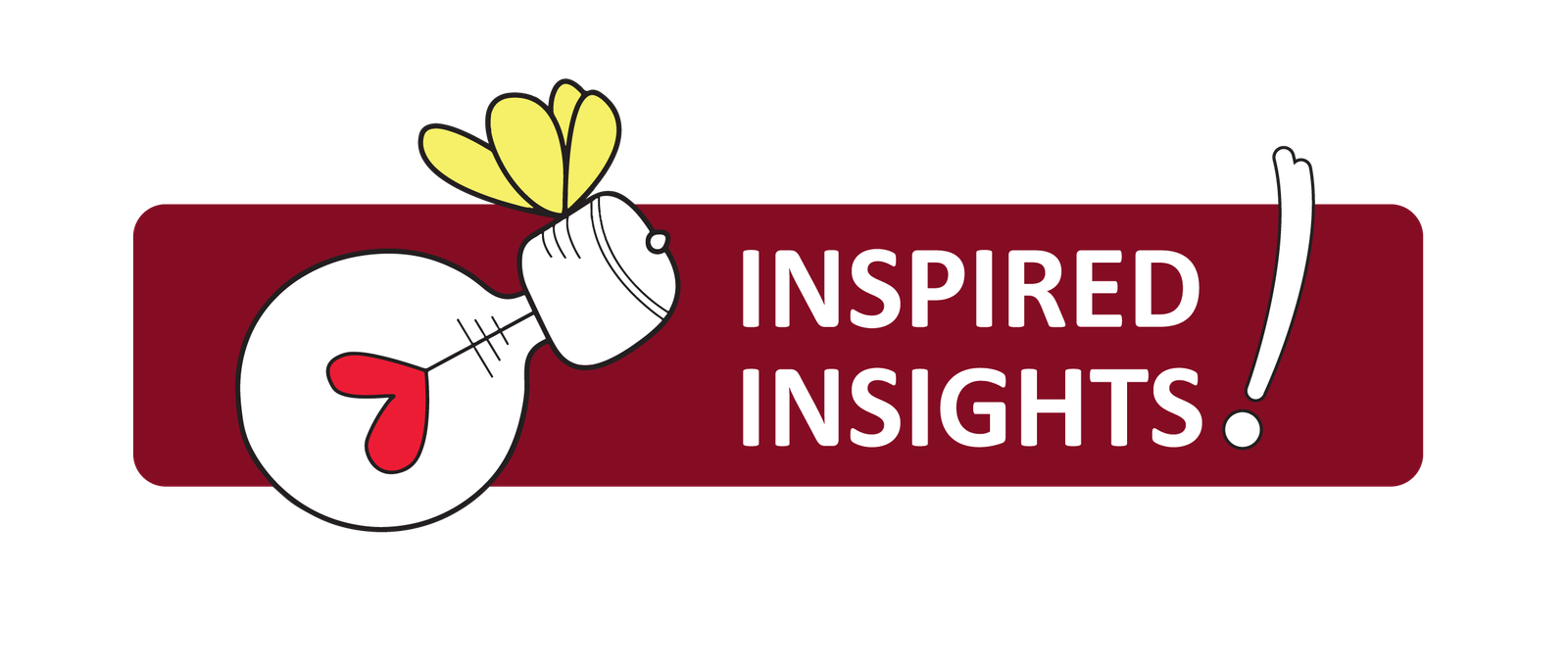
All Episodes
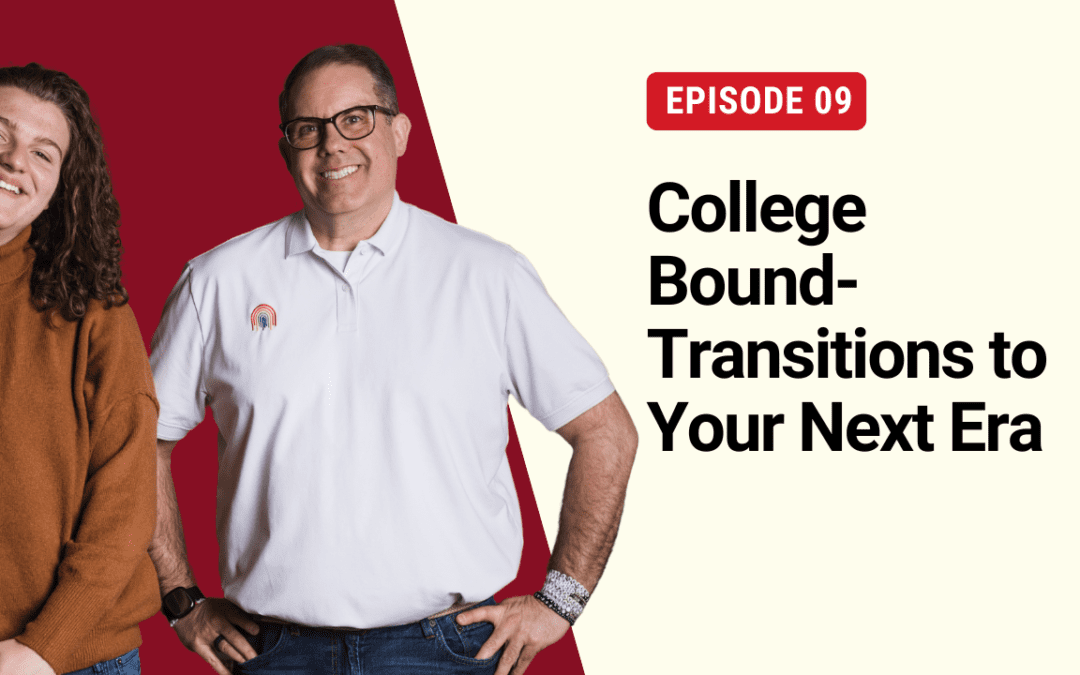
S3E9: College Bound: Transitions to Your Next Era
Soren and Chris sit down with two student life experts, Angela and Andi, to explore the powerful transition from high school to college—and how it reshapes community, mental health, identity, and daily life.
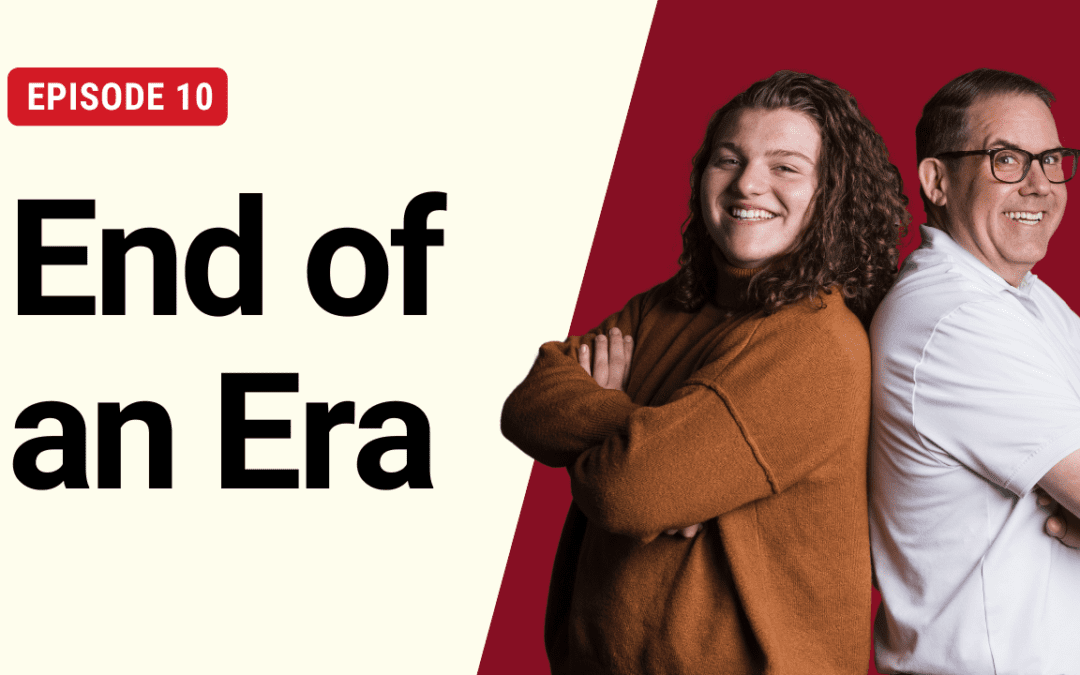
S3E10: End of an Era
Chris and Soren sit down in front of a studio audience filled with family, friends, and past guests to reflect on three seasons and 30 powerful episodes of storytelling, vulnerability, and intergenerational insight.
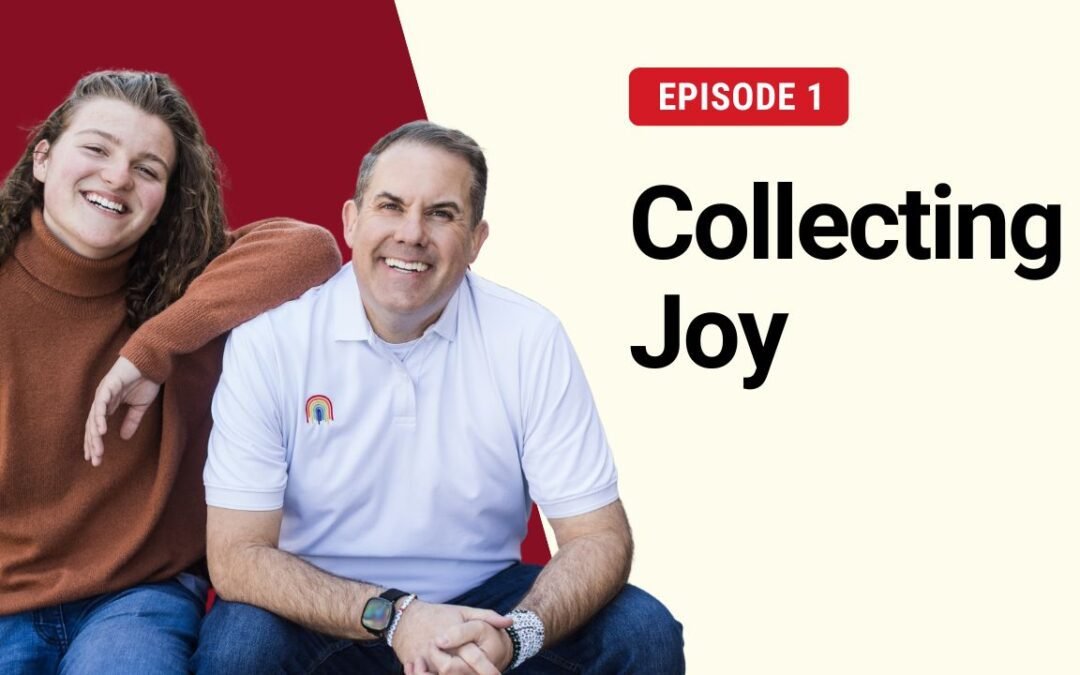
S2E1: Collecting Joy
The start of Season 2 is here! In our premiere episode, Chris and Soren explore the pursuit of happiness through the intentional collection of joy.
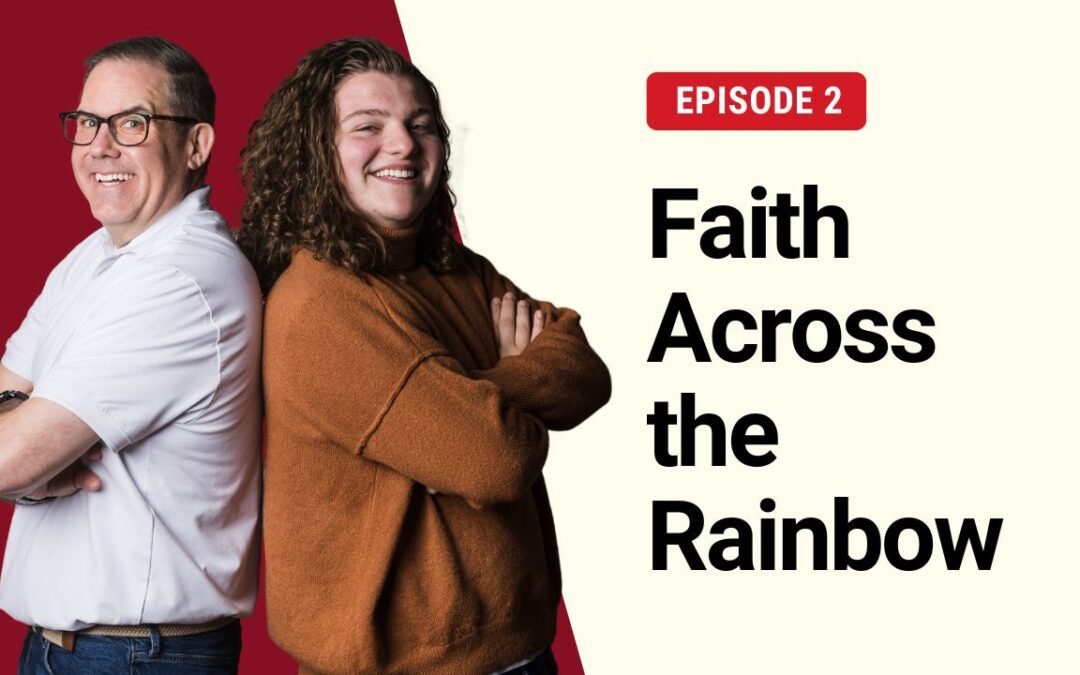
S2E2: Faith Across the Rainbow
Join our guest, chaplain and clinician, Greg Bridges-Music, as he talks with Chris and Soren about navigating the intricate relationship between spirituality and LGBTQ+ identities.

S2E3: Sequins and Smiles
Dive into the vibrant world of drag as Maine’s local drag performer, Dominick Varney, shares personal stories and insights on embodying Queer Joy through the art of drag.
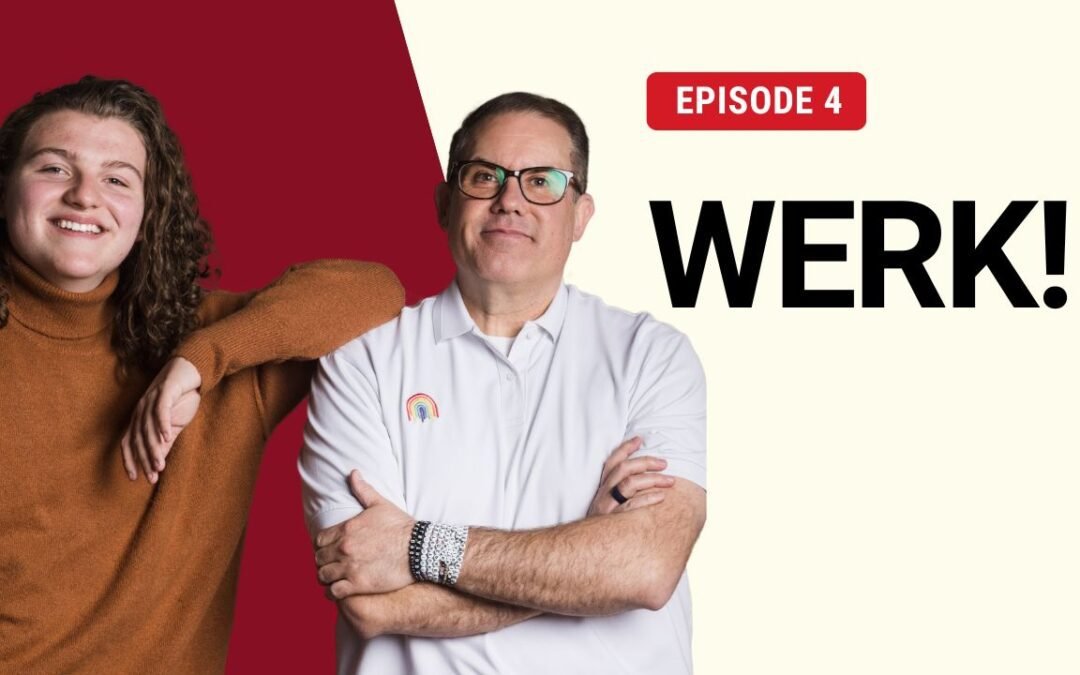
S2E4: WERK!
This discussion highlights how attitudes towards careers, workplace culture, and work-life balance have shifted over time.
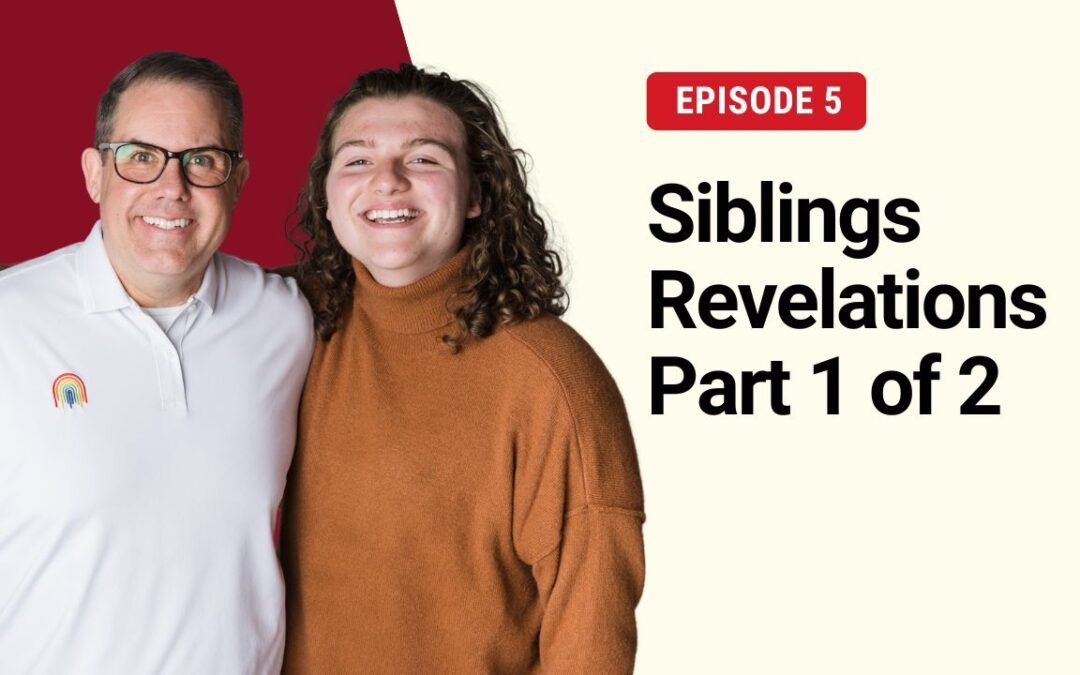
S2E5: Siblings Revelations Part 1 of 2
In this 2-part episode, Chris and Soren are joined by their two younger brothers to discuss the unique experiences and valuable lessons learned from growing up with older queer siblings.
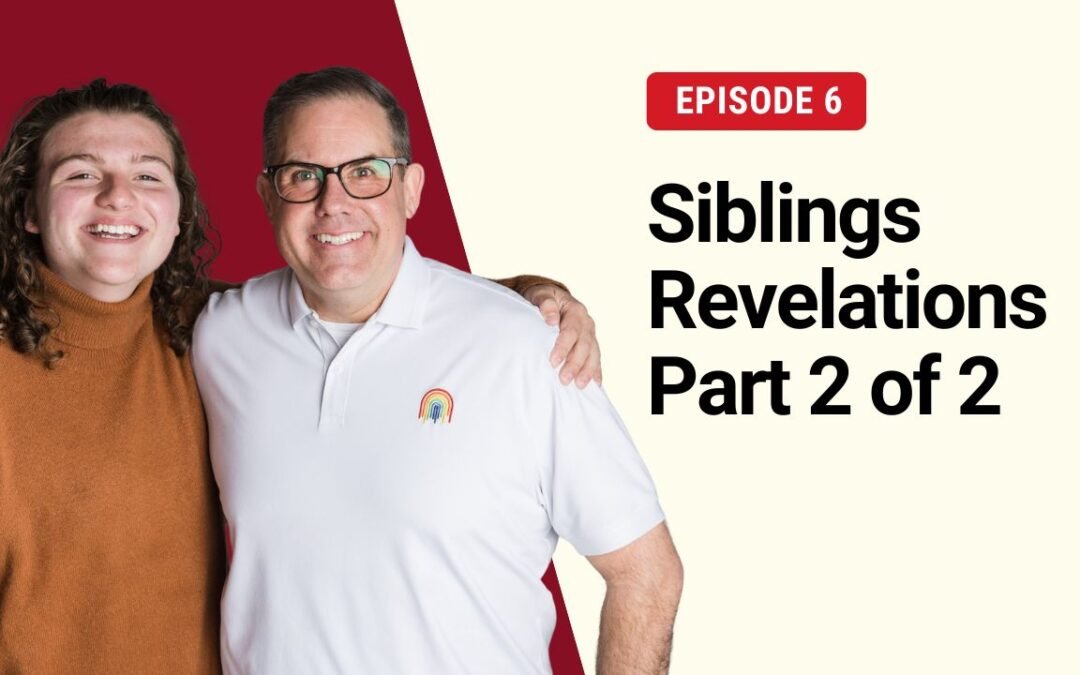
S2E6: Siblings Revelations Part 2 of 2
In this 2-part episode, Chris and Soren are joined by their two younger brothers to discuss the unique experiences and valuable lessons learned from growing up with older queer siblings.
